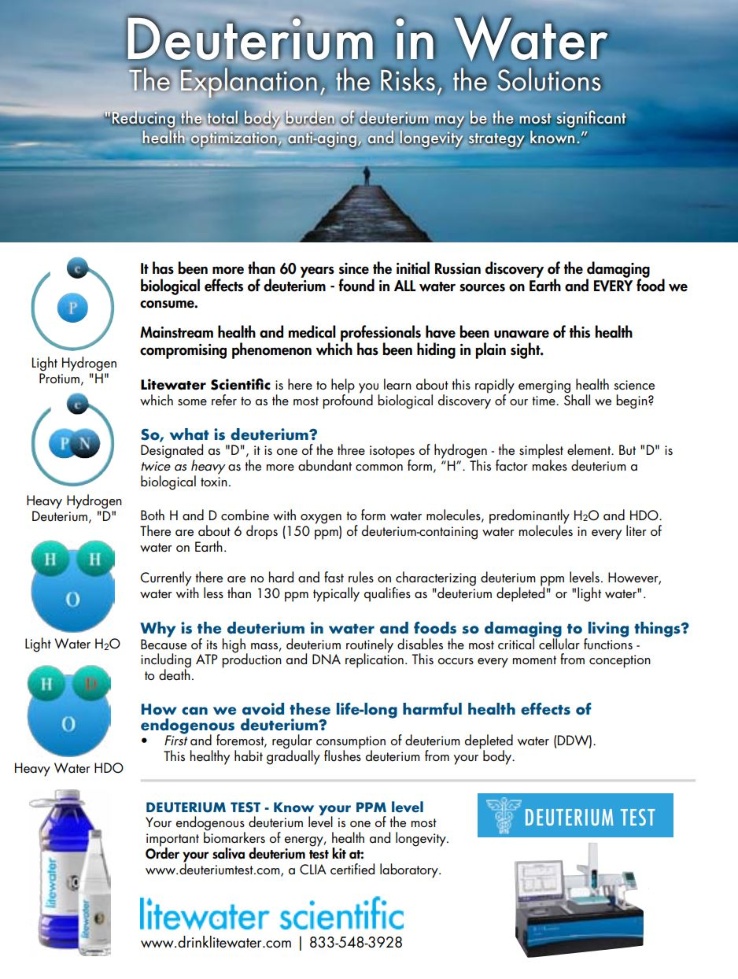…article continued:
- Buy only organic fruits and vegetables that are free of pesticide residues.
- EWG.org list of the dirty dozen and clean fifteen.
- Choose USDA organic meats and dairy products.
- Avoid farmed fish.
- Buy fresh or frozen foods and avoid canned foods with BPA.
- Stop drinking diet soda and instead drink 100 ounces of filtered water a day.
- Avoid or minimize foods wrapped in plastic wrap.
- Eat wild-caught fish low in mercury (salmon, blue crab, flounder, haddock, pollack, trout).
- Add 2 Tbsp ground flax seeds/meal a day on food.
- Add 2 tsp a day of psyllium husk powder in water.
- Drink 3-4 cups of red rooibos tea or green tea.
- Increase legumes, fruits, veggies—organic only.
- Eat 3-4 servings of organic cruciferous veggies a day.
- No refined carbohydrates, white flour, or sugar.
Next, she was asked to do sauna therapy to help her metabolism and to mobilize obesogenic chemicals and eliminate them through perspiration. Sauna therapy instructions were to use infrared sauna therapy twice a week; start with 10 minutes in hot sauna, then do a 30-second cold shower rinse. Repeat this cycle five times and end on cold. She was asked to do this two times a week.
Three supplements were added as well. One is designed to provide vitamin and mineral co-factors for liver phase one and two metabolism. The cofactor support product contained vitamin A, vitamin D3, vitamin K1, vitamin B1, vitamin B2, vitamin B3, vitamin B5, vitamin B6, vitamin B12 (as methylcobalamine), vitamin C, vitamin E, biotin, folate (5-methyl-tetrahydrofolate), calcium, chromium, copper, iodine, magnesium, manganese, molybdenum, potassium, selenium, zinc, choline, inositol, boron, vanadium, green tea extract, and turmeric
The second was a liver herbal supplement with milk thistle, beet root, dandelion, burdock, and artichoke. The third was CoQ10, 200 mg.
The patient disappeared for four months and returned 30 pounds lighter. Her blood pressure at the follow up exam was 140/80 and her cardiologist had repeated her labs. Her fasting glucose lowered from 102 to 98 and her lipids were all within the normal range, but she was still on atorvastatin 20 mg. She said she followed the treatment plan to a T; and although it took a lot of work at home to make the changes to avoid obesogenic chemicals in products and plastics, she did slowly make the changes. I asked her to continue the avoidance recommendations and diet changes, stop the sauna therapy, and continue the supplements, and begin to exercise. We also lowered the atorvastatin to 10 mg.
Four months later she returned for another follow up and had lost another 20 pounds. She had started walking 30 minutes once a day and no longer felt winded or fatigued. She had done a great job sticking to the nutrition plan and avoiding toxicants. Now her height is 5’5”, and she weighs 170 lbs., which is a BMI of 28.28. Her repeat lipid panel was normal, but she was still on atorvastatin 10 mg at this repeat lipid panel. Her blood pressure was 135/80 that day in the office, and we agreed she should start monitoring it at home in case it is high only at the doctor’s office. At this appointment we decided to stop the liver cleanse supplement and atorvastatin and add in red yeast rice, 600 mg twice a day, and 350 mg magnesium. She is still on the CoQ10, vitamin D, fish oil, and cofactor support supplement. She said she was motivated and willing to continue her plan and agreed to try and increase exercise by adding in swimming.
Four months later she returned for a follow up, and four months off the statin drug her lipids were normal along with CBC, CMP, TSH. (I have patients repeat the labs the week before the follow up). She only lost another 10 pounds but is happy to be walking daily and swimming two times a week. She now weighs 160 and her BMI is 26.62. In one year, she lost 60 pounds and feels great and feels like she will keep the weight off. Her blood pressures at home averaged 130/78 and that day in the office was 132/80. Her cardiologist is on board with the plan and familiar with red yeast rice; and since she lost weight and her lipids improved, he is fine with her decision to stop the statin drug. I asked her why she felt like she had success with this approach in terms of her weight loss, and she said she felt that removing the chemicals from her home and diet really made the difference. She felt like it may have been the reason why she could not lose weight. She also felt like the sauna therapy, done the first three months of the plan, made a big difference as well. To date, her weight fluctuates between 155-160; she did not achieve any further weight loss. Her lipids have remained normal, and she even stopped the red yeast rice supplement. She has continued to avoid obesogenic chemicals.
Summary
Obesity is a public health crisis in the US, and there are numerous factors contributing to this problem. One area that needs attention is the impact of toxicants considered obesogenic. These chemicals found in plastics, our food, personal care products, cookware, and water can contribute to obesity. When evaluating a patient or client for causes of obesity and cardiovascular disease, it is important to consider toxicants as a contributor. Educating patients on avoiding these chemicals is key to prevention and treatment of obesity. It begins with awareness and understanding of how chemicals in our environment affect our health.
Dr. Marianne Marchese is the author of the bestselling book 8 Weeks to Women’s Wellness about the environmental links to women’s health conditions and detoxification. She maintains private practice in Phoenix, Arizona, and is adjunct faculty at SCNM, teaching both environmental medicine and gynecology. She served on the State of Arizona Naturopathic Physicians Medical Board, National Association of Environmental Medicine, Arizona Naturopathic Medical Association, and Council on Naturopathic Medical Education. She lectures throughout the US and Canada on women’s health, environmental, and integrative medicine topics. Dr. Marchese recently helped develop three supplements for Priority One Vitamins. Learn more at www.drmarchese.com.
References
- Baillie-Hamilton PF. Chemical toxins: a hypothesis to explain the global obesity epidemic. The Journal of Alternative and Complementary Medicine. 2002;8(2):185–192.
- Diamanti-Kandarakis E, et al. Endocrine-disrupting chemicals: an endocrine society scientific statement. Endocrine Reviews. 2009;30(4):293–342.
- Grün F, Blumberg B. Environmental obesogens: organotins and endocrine disruption via nuclear receptor signaling. Endocrinology. 2006;147(6, supplement):S50–S55.
- Tabb MM, Blumberg B. New modes of action for endocrine-disrupting chemicals. Molecular Endocrinology. 2006;20(3):475–482.
- Kelishadi R, Poursafa P, Jamshidi F. Role of environmental chemicals in obesity: a systematic review on the current evidence. J Environ Public Health. 2013;2013:896789.
- Grün F, Blumberg B. Perturbed nuclear receptor signaling by environmental obesogens as emerging factors in the obesity crisis. Reviews in Endocrine and Metabolic Disorders. 2007;8(2):161–171
- Agency of Toxic Substances and Disease Registry. https://www.atsdr.cdc.gov Accessed Jan 15, 2021.
- Legeay S, Faure S. Is bisphenol A an environmental obesogen? Fundam Clin Pharmacol. 2017 Dec;31(6):594-609.
- Kim SH, Park MJ. Phthalate exposure and childhood obesity. Ann Pediatr Endocrinol Metab. 2014;19(2):69-75.
- Hoppe AA, Carey GB. Polybrominated diphenyl ethers as endocrine disruptors of adipocyte metabolism. Obesity (Silver Spring). 2007 Dec;15(12):2942-50.
- Cardenas A, et al. Association of Perfluoroalkyl and Polyfluoroalkyl Substances With Adiposity. JAMA Netw Open. 2018;1(4):e181493. Published 2018 Aug 3.
- Rosenbaum PF, et al. Metabolic syndrome is associated with exposure to organochlorine pesticides in Anniston, AL, United States. Environment International. 2017;108:11-21.
- Lee DH, et al. Low dose organochlorine pesticides and polychlorinated biphenyls predict obesity, dyslipidemia, and insulin resistance among people free of diabetes. PLoS One. 2011;6(1):e15977.









